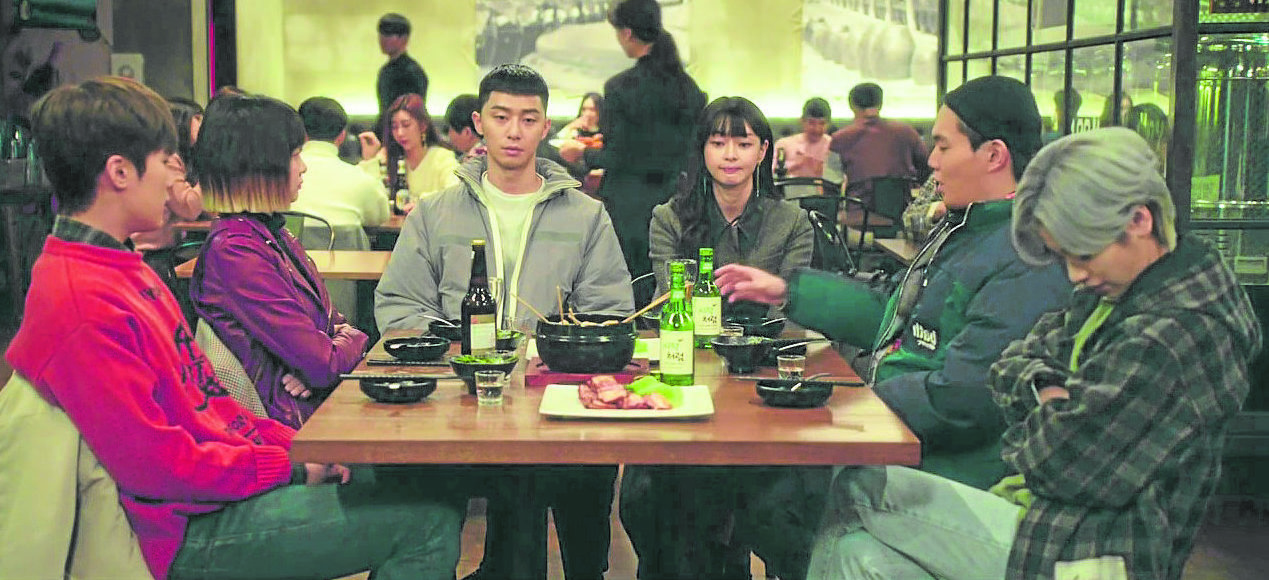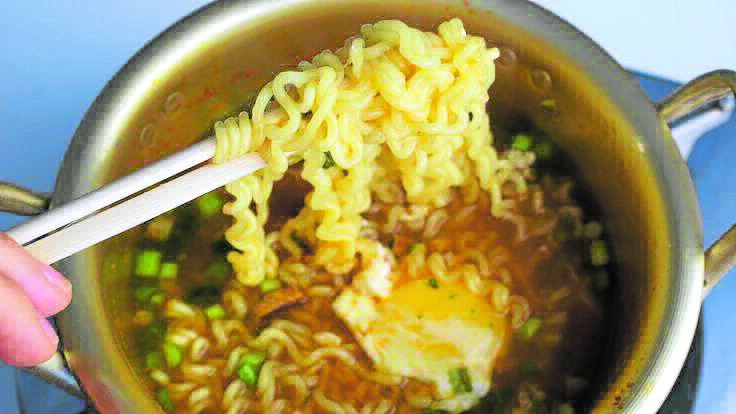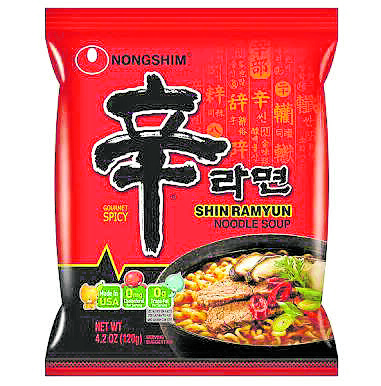
When I am interviewed, one of the questions I am always asked is what I eat in the Philippines, and what I cook at home. The first time, I hesitated for a few seconds, because I thought I ate just like any other person. When I got home that day, I realized people were actually curious about what I, a foreigner, was eating and cooking, or how I maintain my Korean dining habits. I am married to a Filipino of Chinese heritage. I know men here are relatively able and willing to cook, in stark contrast to the traditional image of Korean men. My husband is a good cook, more than I expected. He would look at limited ingredients and then magically make a dish.
I myself make simple staple dishes like dwenjangjjigae (soybean paste soup with tofu and vegetables), eomukbokkum (stir-fried fish cake) and hwangtaeguk (clear pollack soup).
When people find out that we are a multiethnic couple, they also ask if we cook Korean, Chinese or Filipino cuisine at home. Once again, the question surprises me. We do not cook only a particular dish, and we eat like any other people.
I am amazed whenever I see Filipinos buying Korean cooking ingredients from Korean grocery stores: gochujang (fermented chili paste), dwenjang (fermented soybean paste), gim (dried seaweed), danmuji (pickled radish), dubu (tofu) and many more. They are familiar with various Korean dishes they see in K-dramas. Beyond eating in local Korean restaurants, they follow online cooking shows or recipes.
In some extreme cases, they are equipped with all the ingredients for making their own version of kimchi, a staple on Korean dining tables. They proudly present it on social media to show how immersed they are in Korean culture.
Many Korean culture fanatics associate certain food and emotion with familiar K-dramas.
For instance, they see a brokenhearted protagonist drinking endless glasses of soju (distilled rice liquor) in a pojangmacha (makeshift tent eateries at night). When college students gather to destress or gossip, they go for tteokbokki (spicy rice cake) in a hole-in-a-wall. When someone invites you with, “Would you come up for ramyeon (instant noodles)?” it’s a clue that a romantic relationship may start soon.

The first Korean restaurant
These days, every few blocks we see big and small Korean restaurants, and those Korean signages do not look so alien anymore.
What was the first Korean restaurant in the Philippines? In the early 20th century, some members of the Joseon Dynasty immigrated to the Philippines and sold ginseng, too. Branded as Goryeo Insam (Goryeo Dynasty ginseng), it was a popular export to China and Southeast Asian countries.
Binondo was thriving and many oriental pharmacies were already established there, so it was also the place for Korean ginseng merchants. A Korean migrant named Myeong-jib Choi settled in Binondo and opened Goryeo sanghwe (Goryeo general merchandise).
A ginseng merchant who lived with him was Sang-bok Cho, who later opened Korean House, the first Korean restaurant in Manila, in the 1960s, which catered to fellow Korean migrants and also provided voluntary assistance.
Another pioneering Korean restaurant has a dramatic love story. A Filipino military officer, Rocky Flores, who was deployed to Korea during the Korean War, fell in love with a Korean girl, Chung-ae Kim. They came to Manila and got married, and Kim was later christened Fideliza Flores.
Korea Garden was opened in Makati in 1974, a restaurant where Kim showcased traditional Korean cuisine, and which remains a home of authentic Korean dishes today. Their love story was made into the film “Ulilang Bituin” in 1957. Filipino actress Charito Solis played the role of a Korean bride, and you can see her wearing hanbok (the Korean women’s national attire) in the official poster. The number of Korean restaurants in the Philippines constantly grew; according to the Korean Food Promotion Institute, it increased by 81.2 percent from 2014 to 2018. Majority of the restaurants are in Metro Manila, Cebu, Clark and other urban places.
The local trend now is the samgyupsal restaurant.
According to Korea Trade-Investment Promotion Agency (Kotra) Manila, Filipinos’ meat consumption is 28.89 kg per individual, and pork makes up 49 percent of that—1.8 kg more than the international average.
Samgyupsal has become trendy for hallyu (Korean wave) fanatics who want to experience real Korean dining—using chopsticks, dipping grilled meat in ssamjang (spicy soybean paste), wrapping it in lettuce, toasting soju glasses for memorable selfies. Samgyupsal is a staple in Korean menus, as Koreans also love eating and drinking together, a way to share deeper emotions while having heart-to-heart conversations. Food connects people, and grilling samgyupsal is a simple gesture to be close to one another.
What I find interesting is that the word “samgyupsal” is not even translated anymore. The noun has became a household term, and Filipinos already associate it with liempo; Koreans also see liempo as the “Korean version of samgyupsal.”

pandemic rose by 27.5 percent over last year.
‘Jewel in the Palace’
With COVID-19, food businesses were hit heavily, and majority of the stores have been shut down for months now. However, it is surprising to see many small samgyupsal delivery stores mushrooming online and offline. They have transformed menus into party sets. It seems that the samgyupsal business is now a niche market.
Korean cuisine (Hansik) was lesser known compared to its more popular Japanese or Chinese counterparts. Despite geographical proximity to the two countries, Korea remained the hermit kingdom until it was forced to face the modern world. Foreign diners were more familiar with Japanese yakiniku than its Korean counterpart, bulgogi (sweet marinated beef), or maki more than kimbap (rice rolled in seaweed). In the worst case, kimchi was pronounced “kimuchi,” which was how the Japanese said it.
For the longest time, bestsellers in overseas Korean restaurants were bibimbap (rice with mixed vegetables in hot stoneware), kalbi (marinated beef ribs) and japchae (glass noodles with mixed vegetables).
When the K-drama “Jewel in the Palace” (Daejanggeum) aired in and outside of Korea and became a massive hit, it gave foreigners a new perspective on Korean cuisine. Although the character Janggeum was made up for the fictional story, foreign viewers were immersed in her delicate cooking and traditional table setting, a style never seen before on TV. That was also when Korea saw the possibility of globalizing Hansik beyond traditional menus. Several food-inspired dramas followed, such as “Let’s eat,” “Pasta,” “Gourmet” and “Baker King Kim Tak-gu,” to name a few.
Hansik is promoted in many reality TV shows, too. In 2009, a variety show entitled ‘Infinity Challenge’ (Muhandojeon) had special episodes promoting Korean food in New York. The hosts flew to the United States, surveyed Americans’ perception of Korean food, learned cooking from a real chef, and presented bibimbap to New Yorkers. A special advertisement was displayed in Times Square. This was before PSY of the “Gangnam Style” hit song, so who would have given a never-seen-before Asian rice bowl commercial a second look?
As part of promoting Korean culture, the globalization of Hansik was aggressively acted on during President Lee Myung-bak’s administration in the early 2000s. One of the key promoters was First Lady Yun-ok Lee. The administration specifically pushed four kinds of Korean food: kimchi, bibimbap, makgeolli (sparkling rice wine) and tteokbokki.
However, despite enormous investment, the effort fizzled out; people saw Korean food only as a marketable commodity, and not as a culture. There was no deliberation on which Korean food would suit the foreigner’s palate. Moreover, the administration rushed to organize several food festivals and symposia. Many scholars and experts criticized that this top-down campaign was political, and failed to present any unique Korean cultural values.
Afterward, key players in the private sectors, companies such as Nongshim, Pulmuwon and CJ, focused on innovation to offer easy-to-cook processed food that would appeal to mainstream taste buds. They expanded their production lines outside of Korea, built overseas factories, and turned to R&D. CJ Bibigo recorded unprecedented sales of mandoo (dumpling) in the US, China, Vietnam and Japan.
‘Parasite’
The export volume of Korean instant noodles during the pandemic increased by 27.5 percent over last year. One of the examples is jjapaguri, translated into ram-don in the award-winning movie “Parasite.” It is a mix of jjapaghetti (sweet blackbean noodles) and neoguri (seafood udon noodles), but after seeing its smash hit sales because of the movie, its maker, Nongshim, invented a new brand of jjapaguri.
In 2019, the Korean government enacted the Korean Food Promotion Act. Some people may be pessimistic; it seems like a deja vu of the state-driven campaign that failed disastrously some years ago. Food may be the easiest way to a person’s heart, yet it is hardest to match with someone else’s taste buds. What Korea should work on is to entice the world with ordinary, yet extraordinary flavors.
Since its establishment in 2010, the Korean Cultural Center (KCC) in the Philippines has been promoting Korean food by offering regular cooking classes and organizing the annual Global Korean Cooking Contest.
The annual contest invites amateurs and professionals, whoever loves cooking Korean dishes, to compete. The contestants showcase their creative cooking skills using Korean as well as Filipino ingredients. Some follow conventional recipes, while others create fusion dishes. Venturing into partnerships with local universities that offer hotel and restaurant management courses is another key to sustain the organic growth of Hansik in the Philippines. One of the most popular dishes for foreigners is bibimbap. Its symbolic message is harmony, with various savory ingredients mixed together and creating a harmonious flavor. The combination of the dish’s five colors (obangsaek)—black, red, blue, white, yellow—echoes spiritual aspects, signifying the elements of the universe—water, fire, wood, metal, and earth. These are believed to provide human beings with energy, according to the Yin and Yang principle. It’s the perfect time for Korean food to share this message with the global community.
The author is assistant professorial fellow at the Department of Linguistics, University of the Philippines (UP) Diliman, and research fellow at the UP Korea Research Center.








































